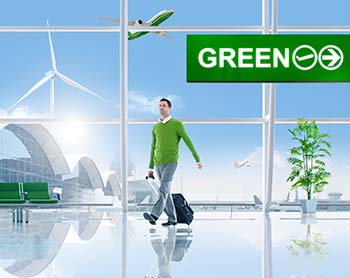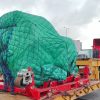 With the impending danger of a warming planet and the continuous depletion of the planet’s fossil fuels the world is moving towards more sustainable forms of energy. From electric cars to countries powering parts of their power grid with solar panels and wind turbines; sustainable forms of energy are quickly becoming the most effective forms of energy. Aviation is no exception, with projects in both the civil and commercial world the efforts to bring hybrid and sustainable sourced energy to the aviation world is paying off.
With the impending danger of a warming planet and the continuous depletion of the planet’s fossil fuels the world is moving towards more sustainable forms of energy. From electric cars to countries powering parts of their power grid with solar panels and wind turbines; sustainable forms of energy are quickly becoming the most effective forms of energy. Aviation is no exception, with projects in both the civil and commercial world the efforts to bring hybrid and sustainable sourced energy to the aviation world is paying off.
“Aircraft contribute only 2%-4% of the total global CO2 emissions. Compared to other industries this is a relatively small amount, but I believe there is always room for improvement,” says Gediminas Ziemelis, Chairman of the Board at Avia Solutions Group. These improvements would be seen in both environmental and operating costs benefits. While CO2 emissions remain the most prominent and well known risk it is certainly not the only polluting factor from aircraft. Because aircraft fly high in the atmosphere their emissions multiplier needs to be taken into consideration. Radiative blocking from the emitted nitrogen oxides and contrails the aircraft create contributes significantly to its overall environmental impact. These are not new problems either, since 1990 there has been an 83% increase in CO2 emissions from the aviation industry. This complex problem needs an urgent solution and multifaceted problems require multifaceted solutions.
Alternative energy sources
Despite the massive amounts of fuel aircraft require for a flight aircraft engines today are incredibly fuel efficient. The high bypass engines used on commercial airliners are meticulously engineered to maximize efficiency on long duration flights. “The kerosene driven engines that power the aircraft are continuously subjected to incremental improvements in efficiency, but these improvements are mostly nullified by the rapid growth of the industry. In order to start making real improvements to the overall sustainability in aviation there needs to be a revolution in the type of fuel that is used,” says Gediminas Ziemelis.
One such revolution comes in the form of biofuels. Even existing plane engines today could fly on a 50/50 blend of biofuel without problem. An aircraft that has been completely converted to fly off biofuels could see as much as a 60% savings on carbon emissions. Using the new generation of algal based biofuels all of aviation’s energy demands could be met from a pond with a surface area of 30,528 km². The main barrier to widespread implementation is the cost as kerosene remains the less expensive option.
Biofuels aren’t the only alternative fuels that are being considered for flight. Another lesser known area of research focuses on fuel cells to power aircraft. Because fuel cells create power through a chemical reaction with hydrogen the only byproduct they create is H2O. Fuel cells are a clean power source that can be implemented in aircraft but unfortunately they are limited by current technology. As it stands the weight of current fuels cells is prohibitive as it takes up a large percentage of the useful payload of the aircraft. Additionally, the power density of fuel cells is not at the level where it can produce enough power for a commercial airliner to take off.
Hybrids as the next step
“The most promising innovations in commercial aircraft fuel sustainability comes in the form of hybrid technologies. Combining multiple different technologies together means aircraft can benefit from the best parts of new technology while avoiding the biggest downsides,” says Gediminas Ziemelis. One such venture in the hybrid aircraft industry Zunum Aero, is working on building a primarily electric aircraft to fly regional routes of distances less than 1600 km. The first aircraft Zunum aero is working on will be able to carry 12 passengers and will be ready to start flying routes in 2022. Another promising hybrid aircraft project is a joint venture between Rolls-Royce, Airbus, and Siemens, all giants in the aviation industry. The project is called E-Fan X and its purpose is to introduce proof of concept technology to make air travel both less expensive and cleaner for the environment. At first the E-Fan X will only replace one engine on the BAe 146, which is set to start flying by 2020, and eventually the E-Fan X will roll out to replace more engines. In the future as battery technology and electric engines improve hybrid aircraft will be able to fly further, faster, and eventually without the need for the kerosene component of the engine, transitioning from hybrid to fully electric.
Necessary for the future
Sustainable energy is not only possible in aviation but very necessary. The commercial aviation industry is to the point where massive amounts of money poured into research is only returning marginally better results in aircraft performance and efficiency. Slow and steady improvements are necessary in aviation as there is always a lot on the line. While the innovation happening in sustainability seems to only be moving forward at a crawl it is actually making leaps and bounds compared to innovations in traditional aircraft power plants. Environmental problems did not appear overnight and similarly the solutions to these problems will develop over time. “While progress may seem slow at times overall the outlook is very good as the aviation industry continues to do what it has always done; innovate and find solutions to the big problems,” concludes Gediminas Ziemelis.





